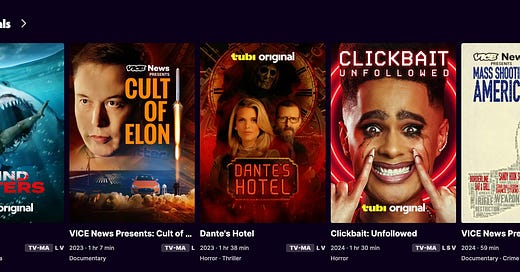This week: Tubi launches in the UK; Netflix and Amazon dominate SVOD commissioning; streaming merger chatter
Thanks to the power of LinkedIn, there are many more subscribers this week, so welcome to you! I thought I’d explain a bit more why I started this newsletter and what the point of it is, considering how much email clutter we all have already.
When I stepped out of working for larger companies and began consulting around 10 years ago, it became clear tha…
Keep reading with a 7-day free trial
Subscribe to Business of TV to keep reading this post and get 7 days of free access to the full post archives.




